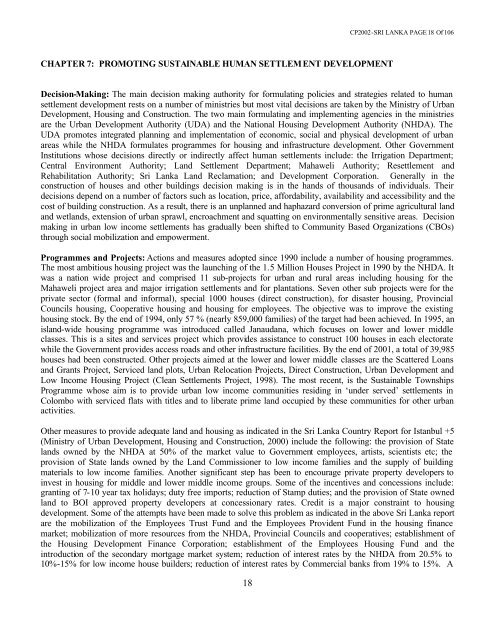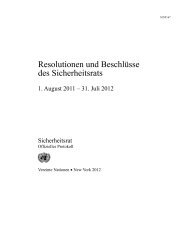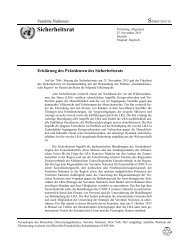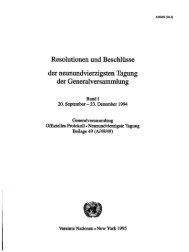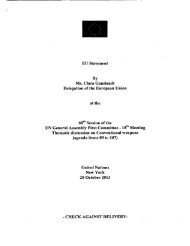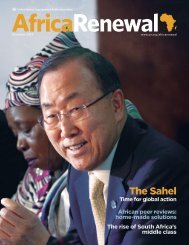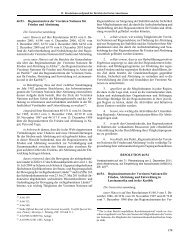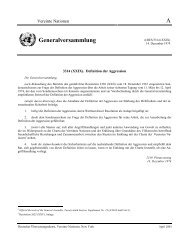SRI LANKA COUNTRY PROFILE
SRI LANKA COUNTRY PROFILE
SRI LANKA COUNTRY PROFILE
Create successful ePaper yourself
Turn your PDF publications into a flip-book with our unique Google optimized e-Paper software.
CHAPTER 7: PROMOTING SUSTAINABLE HUMAN SETTLEMENT DEVELOPMENT<br />
18<br />
CP2002-<strong>SRI</strong> <strong>LANKA</strong> PAGE 18 Of 106<br />
Decision-Making: The main decision making authority for formulating policies and strategies related to human<br />
settlement development rests on a number of ministries but most vital decisions are taken by the Ministry of Urban<br />
Development, Housing and Construction. The two main formulating and implementing agencies in the ministries<br />
are the Urban Development Authority (UDA) and the National Housing Development Authority (NHDA). The<br />
UDA promotes integrated planning and implementation of economic, social and physical development of urban<br />
areas while the NHDA formulates programmes for housing and infrastructure development. Other Government<br />
Institutions whose decisions directly or indirectly affect human settlements include: the Irrigation Department;<br />
Central Environment Authority; Land Settlement Department; Mahaweli Authority; Resettlement and<br />
Rehabilitation Authority; Sri Lanka Land Reclamation; and Development Corporation. Generally in the<br />
construction of houses and other buildings decision making is in the hands of thousands of individuals. Their<br />
decisions depend on a number of factors such as location, price, affordability, availability and accessibility and the<br />
cost of building construction. As a result, there is an unplanned and haphazard conversion of prime agricultural land<br />
and wetlands, extension of urban sprawl, encroachment and squatting on environmentally sensitive areas. Decision<br />
making in urban low income settlements has gradually been shifted to Community Based Organizations (CBOs)<br />
through social mobilization and empowerment.<br />
Programmes and Projects: Actions and measures adopted since 1990 include a number of housing programmes.<br />
The most ambitious housing project was the launching of the 1.5 Million Houses Project in 1990 by the NHDA. It<br />
was a nation wide project and comprised 11 sub-projects for urban and rural areas including housing for the<br />
Mahaweli project area and major irrigation settlements and for plantations. Seven other sub projects were for the<br />
private sector (formal and informal), special 1000 houses (direct construction), for disaster housing, Provincial<br />
Councils housing, Cooperative housing and housing for employees. The objective was to improve the existing<br />
housing stock. By the end of 1994, only 57 % (nearly 859,000 families) of the target had been achieved. In 1995, an<br />
island-wide housing programme was introduced called Janaudana, which focuses on lower and lower middle<br />
classes. This is a sites and services project which provides assistance to construct 100 houses in each electorate<br />
while the Government provides access roads and other infrastructure facilities. By the end of 2001, a total of 39,985<br />
houses had been constructed. Other projects aimed at the lower and lower middle classes are the Scattered Loans<br />
and Grants Project, Serviced land plots, Urban Relocation Projects, Direct Construction, Urban Development and<br />
Low Income Housing Project (Clean Settlements Project, 1998). The most recent, is the Sustainable Townships<br />
Programme whose aim is to provide urban low income communities residing in ‘under served’ settlements in<br />
Colombo with serviced flats with titles and to liberate prime land occupied by these communities for other urban<br />
activities.<br />
Other measures to provide adequate land and housing as indicated in the Sri Lanka Country Report for Istanbul +5<br />
(Ministry of Urban Development, Housing and Construction, 2000) include the following: the provision of State<br />
lands owned by the NHDA at 50% of the market value to Government employees, artists, scientists etc; the<br />
provision of State lands owned by the Land Commissioner to low income families and the supply of building<br />
materials to low income families. Another significant step has been to encourage private property developers to<br />
invest in housing for middle and lower middle income groups. Some of the incentives and concessions include:<br />
granting of 7-10 year tax holidays; duty free imports; reduction of Stamp duties; and the provision of State owned<br />
land to BOI approved property developers at concessionary rates. Credit is a major constraint to housing<br />
development. Some of the attempts have been made to solve this problem as indicated in the above Sri Lanka report<br />
are the mobilization of the Employees Trust Fund and the Employees Provident Fund in the housing finance<br />
market; mobilization of more resources from the NHDA, Provincial Councils and cooperatives; establishment of<br />
the Housing Development Finance Corporation; establishment of the Employees Housing Fund and the<br />
introduction of the secondary mortgage market system; reduction of interest rates by the NHDA from 20.5% to<br />
10%-15% for low income house builders; reduction of interest rates by Commercial banks from 19% to 15%. A


